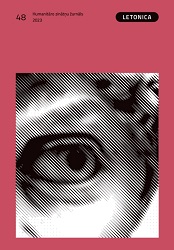Fišera darbnīcas stikla lustra Alūksnes luterāņu baznīcā
The Glass Chandelier from Fischer’s Workshop in Alūksne Lutheran Church
Author(s): Kristīne BudžeSubject(s): Visual Arts, 18th Century, History of Art
Published by: Latvijas Universitātes Literatūras, folkloras un mākslas institūts
Keywords: 18th century; Classicism; Catherinian chandeliers; Vietinghoff family; Baltic nobility; Russian Empire;
Summary/Abstract: Until the middle of the 18th century, lighting in Russia, even in its imperial palaces, was modest. This attitude towards lighting was transformed by Empress Elizabeth I of Russia. Her reign is characterized by French-style glass chandeliers. In Russia, they are called Elizabethan chandeliers, thus emphasizing the stylistic difference from the Classicism ceiling light fixtures, which were made in the late-18th century and are known as Catherinian chandeliers. More widely known are three workshops in St. Petersburg that operated from the 1780s until the 1820s and produced chandeliers for the rulers, royal court, and supreme aristocracy. One of these workshops belonged to Johann Adam Simon Fisher (?–1820). The only known glass chandelier in Latvia that has survived to this day and can be attributed to Fisher’s workshop is in Alūksne Lutheran Church. The chandelier is associated with Christoph Burchard von Vietinghoff (1767– 1829). He was a chamberlain and a court martial of the heir to the Russian throne, Paul I of Russia (1854–1801). The splendor of imperial palaces had inspired the young Vietinghoff to create something similar in Alūksne Manor, where in 1793–1794 he erected a new building in place of the old manor house. The glass chandelier with green glass decorative vases and six candles corresponding to Russian Classicism, made in Fisher’s workshop between 1795 and 1805, is a rare, exquisite object of decorative art uncharacteristic of the area, which testifies to the tastes of the late-18th century and the financial reach of the Baltic nobility, as well as to the nobility’s relations with the court of the Russian Empire and high society.
Journal: Letonica
- Issue Year: 2023
- Issue No: 48
- Page Range: 6-23
- Page Count: 18
- Language: Latvian

